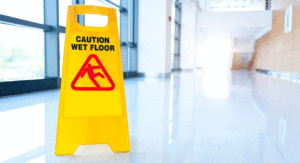 HYANNIS – Many of us have experienced a time in our lives when a fall sends us flying through the air or just stumbling a bit. If we’re lucky, we survive with only some bumps or bruises. Some falls can mean time out of work, inability to get around and possible hospitalization and physical therapy.
HYANNIS – Many of us have experienced a time in our lives when a fall sends us flying through the air or just stumbling a bit. If we’re lucky, we survive with only some bumps or bruises. Some falls can mean time out of work, inability to get around and possible hospitalization and physical therapy.
The Centers for Disease Control and Prevention (CDC) issued a 2015 report citing falls as the leading cause of non-fatal injury in all age groups, except one. In the 15-19 age group, falls were the second leading cause. The report also showed that a little more than 9 million reported non-fatal falls per year in the population 55 and older.
“The age group that has falls most often is between 50 and 60,” said Jinx O’Loughlin, PT, MBA, CEEAA, a physical therapist with Cape Cod Healthcare. “They are still active and haven’t yet lost mobility, but may be starting to loose stability.”
So what do we do if the inevitable happens and we’re on our way to the floor or the ground?
She suggests the following:
Most importantly, protect your head; tuck your chin and bring your arms up around your head.
Do not put your hands out in front of you to break the fall, because you will have the full weight of your body on your wrists and shoulders.
Go with the fall; just be smooth and stay loose and try not to fight it.
If you are walking in slippery conditions, walk slowly, keep scanning your environment and slide your feet along, if you have to.
Try to land on your butt or your shoulder, where there is more muscle.
Roll when you hit the ground; don’t try to stop.
Bend your knees and elbows; collapse and go with the fall.
This can be a lot to remember and O’Loughlin recommends practicing falling, so you’ll know what to do.
“Go to a senior center or a gym and practice falling on an exercise mat,” she said. “There is usually someone that can train you how to fall. You begin by starting to go down slowly, then you go a little faster followed by learning how to roll. If you practice how to fall, then you won’t panic when it happens.”
Another tip to practice at the gym is getting up after a fall.
“Whether you use a piece of equipment or furniture, put your hands out in front of you to grab it, raise yourself to a half-kneeling position with one leg and then try to push up to a standing position,” she said.
There may be a time when we fall at home or in a location where we can’t get up. If that happens, O’Loughlin advises making some noise.
Try to call for help and, if someone is within earshot, yell to them.
Get to your phone or lifeline, if able.
Slide to a window or door to yell for help.
Try to attract attention by banging pots and pans, rattling the furniture and or hitting something.
If you can’t get up, try to grab a pillow or blanket to get as comfortable as possible to prevent shock, especially in the cold. Also, move around a little bit to keep from getting stiff.
While these tips are all helpful, prevention is really the key, according to O’Loughlin.
“Scan your surroundings, make sure lighting is good, be present in the moment so you’ll be aware of your environment and pay attention. Stay strong and fit.”
























